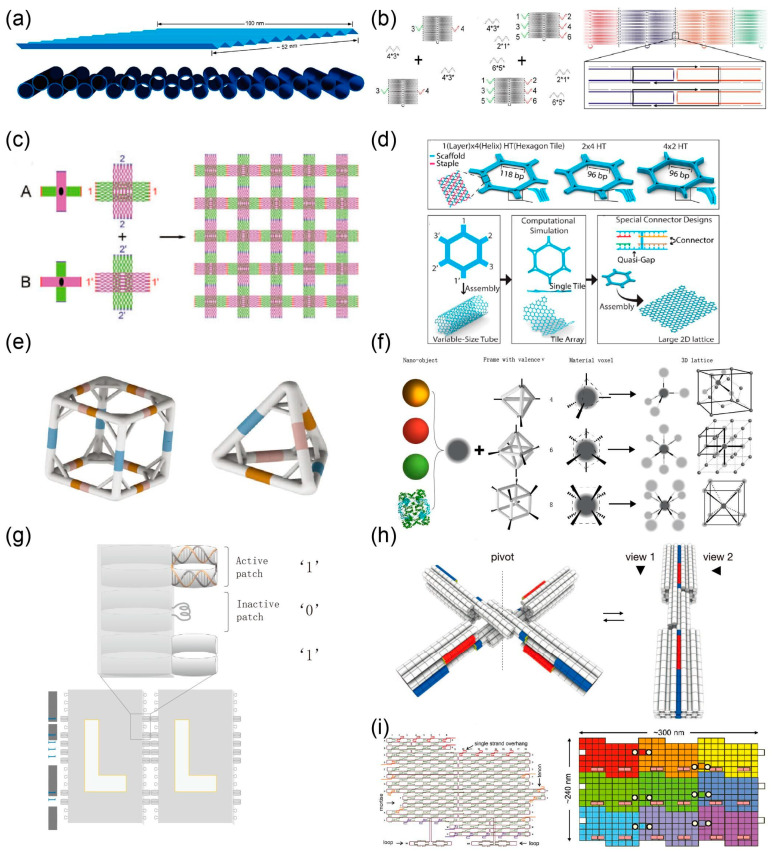Figure 4.
Sticky ends base pairing (a–f). (a) “Zigzag DNA origami” tiles were assembled into a one-dimensional (1D) lattice. Reproduced with permission of [55]. Copyright American Chemical Society, 2010. (b) Three different assembly methods of DNA origami monomers. Reproduced with permission of [56]. Copyright Springer Nature, 2011. (c) Assembly of a 2D DNA origami lattice using a cross-shaped origami tile. Reproduced with permission of [57]. Copyright WILEY−VCH Verlag GmbH & Co. KGaA, Weinheim, Germany, 2011. (d) Programming DNA origami honeycomb 2D lattices. Reproduced with permission of [58]. Copyright American Chemical Society, 2016. (e) A polyhedron self-assembled from DNA tripods. Reproduced from [59]. (f) Constructing different 3D DNA origami lattices using DNA-prescribed and valence-controlled material voxels. Reproduced with permission of [2]. Copyright Springer Nature, 2020. Blunt ends base stacking (g–i). (g) Recognition based on the binary sequences of blunt ends and the complementarity of the origami edge shapes of DNA nanostructures. Reproduced with permission of [60]. Copyright Springer Nature, 2011. (h) Self-assembly of 3D DNA components in a solution on the basis of shape complementarity. Reproduced from [61]. (i) Assembly of multiple DNA origami jigsaw pieces in three different ways. Reproduced with permission of [62]. Copyright American Chemical Society, 2011.

